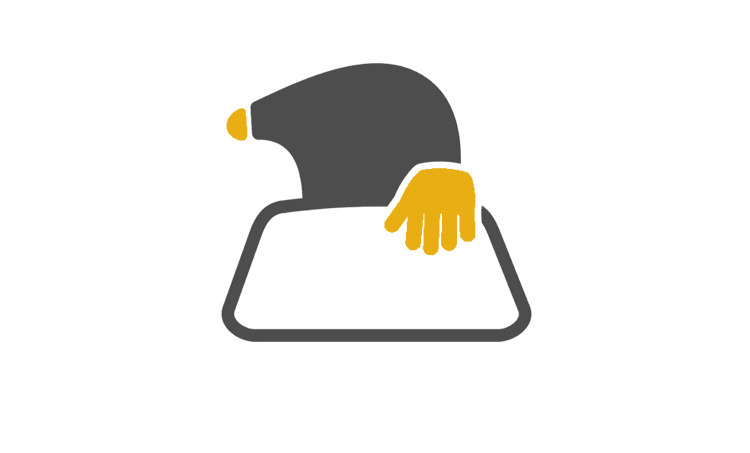Last Updated on: 3rd February 2025, 02:03 pm
Bone healing after spinal fusion surgery requires careful management and can sometimes present challenges. Dr. Larry Davidson, a highly regarded spinal surgeon, has seen many advancements that help support the healing process. One of these is electrical stimulation, a valuable tool that aids in enhancing bone healing, promoting successful fusion, and reducing the risk of complications.
Understanding Electrical Stimulation in Bone Healing
Electrical stimulation is a noninvasive or minimally invasive technique that uses electrical currents to stimulate bone growth. It has been widely used in orthopedic procedures, particularly in patients at risk for poor bone healing. Electrical stimulation devices are designed to deliver low-frequency electrical currents to the surgical site, encouraging bone regeneration and accelerating the fusion process.
There are three primary types of electrical stimulation used in postoperative bone healing:
- Direct Current Stimulation (DCS): This method involves placing electrodes directly at the fusion site during surgery. These electrodes generate a continuous flow of electrical current to stimulate bone cells, promoting faster bone growth. DCS devices are typically implanted alongside the hardware used for spinal fusion and remain in place for several months until the fusion is complete.
- Capacitive Coupling (CC): Capacitive coupling involves placing external electrodes on the skin near the surgical site. These electrodes create an electric field that penetrates the tissues and reaches the bone, stimulating bone cell activity. CC devices are worn externally and can be easily applied by patients at home during the recovery period.
- Pulsed Electromagnetic Field (PEMF): PEMF therapy uses electromagnetic fields to stimulate bone growth. Like capacitive coupling, PEMF devices are worn externally, and the electromagnetic fields penetrate the tissues to reach the bone, enhancing the healing process. PEMF is one of the most commonly used forms of electrical stimulation for spinal fusion patients.
How Electrical Stimulation Enhances Bone Fusion
Electrical stimulation enhances the body’s natural bone regeneration processes, which are essential during spinal fusion as osteoblasts work to build new bone and bridge vertebrae. Factors like age, smoking, health conditions, or previous surgeries can impair this process. Electrical stimulation mimics the body’s bioelectrical signals, stimulating osteoblast activity and accelerating bone growth. It also promotes angiogenesis, improving blood flow and delivering essential nutrients and oxygen to the surgical site. Studies show that electrical stimulation significantly boosts bone fusion success rates, especially in high-risk patients, leading to faster recovery and better surgical outcomes.
Benefits of Electrical Stimulation in Postoperative Healing
Electrical stimulation offers several key benefits for patients recovering from spinal fusion surgery:
- Improved Fusion Rates: One of the primary advantages of electrical stimulation is its ability to improve bone fusion rates. By stimulating bone cell activity and promoting angiogenesis, electrical stimulation increases the likelihood of achieving a solid fusion between the vertebrae. This is particularly important for patients at risk of nonunion, such as those with osteoporosis, smokers, or individuals undergoing revision surgeries.
- Reduced Need for Revision Surgery: Nonunion, or failure of the bones to fuse, can result in chronic pain and the need for additional surgeries to correct the issue. Electrical stimulation reduces the risk of nonunion by promoting faster and more complete bone healing, thereby decreasing the need for costly and invasive revision procedures.
- Minimally Invasive and Easy to Use: One of the greatest advantages of electrical stimulation devices for patients is their ease of use. Capacitive coupling and PEMF devices are noninvasive and can be worn externally, allowing patients to continue their recovery at home without the need for additional surgeries or hospital stays. These devices are portable and easy to incorporate into a daily routine, making them a convenient option for enhancing postoperative recovery.
- Faster Recovery Times: Electrical stimulation can accelerate the bone healing process, leading to faster recovery times for patients. While traditional bone healing can take several months, electrical stimulation helps speed up the fusion process, allowing patients to return to normal activities sooner.
- Safe and Well-Tolerated: Electrical stimulation devices are generally well-tolerated by patients and have minimal side effects. The risk of infection or complications from the devices is low, making them a safe option for promoting bone healing after spinal fusion surgery.
Who Can Benefit from Electrical Stimulation?
Electrical stimulation is especially beneficial for patients at higher risk of nonunion during spinal fusion surgery. Smokers, for example, often experience impaired bone healing due to reduced blood flow and oxygen levels at the surgical site; electrical stimulation promotes angiogenesis and improves bone regeneration. Patients with osteoporosis who have weakened bones can also benefit as stimulation enhances bone formation, increasing the likelihood of a successful fusion. Those undergoing revision surgeries, where scar tissue or previous procedures complicate healing, can experience improved bone growth and fusion support through electrical stimulation. Additionally, older adults, who often face decreased bone density and slower healing, can use this technology to accelerate the bone fusion process and enhance recovery outcomes.
Innovations in Electrical Stimulation Technology
As technology continues to advance, electrical stimulation devices are becoming more sophisticated and effective. Modern devices are designed to be lightweight, portable, and user-friendly, making them easier for patients to incorporate into their daily lives. Some devices now feature wireless capabilities, allowing patients to wear the devices discreetly under clothing without the need for external wires.
Additionally, ongoing research is exploring the use of combination therapies, where electrical stimulation is paired with other bone healing technologies, such as bone growth stimulators or 3D-printed implants. These innovations have the potential to further enhance bone fusion rates and reduce the risk of complications after spinal surgery.
Electrical stimulation has become an invaluable tool in enhancing bone healing after spinal fusion surgery. By stimulating bone cell activity and promoting angiogenesis, this technology improves fusion rates and reduces the need for revision surgeries. It helps patients recover more quickly and increases the overall success of the procedure. As advancements continue, electrical stimulation devices are expected to become even more effective and accessible, offering patients a powerful means of achieving optimal outcomes in spinal fusion surgery. Spinal surgeons like Dr. Larry Davidson recognize the growing importance of these technologies in improving recovery and surgical results.






